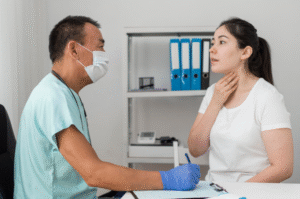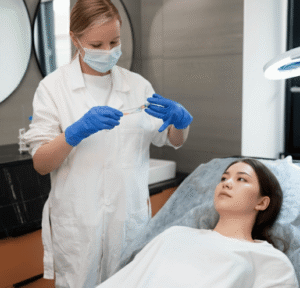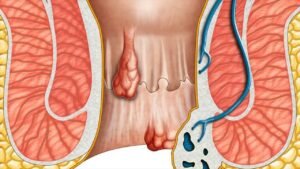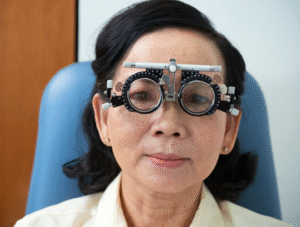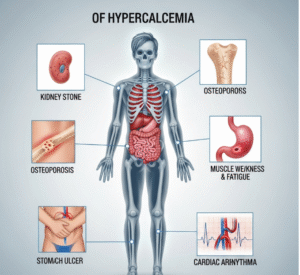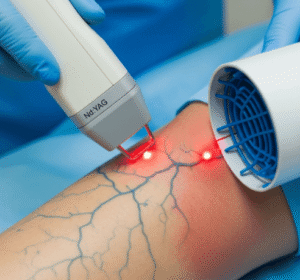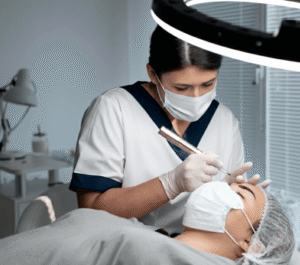Overview
Tension headache is one of the most common types of primary headaches, characterized by mild to moderate pain, often described as a tight band or pressure around the head. Unlike migraines, tension headaches are typically not associated with nausea or visual disturbances but can significantly affect daily activities, productivity, and quality of life. In South Korea, neurology clinics and pain management centers offer comprehensive diagnosis, treatment, and preventive strategies for tension headaches, utilizing modern medical approaches, lifestyle modifications, and advanced therapeutic interventions.
What is a Tension Headache?
A tension headache arises from muscle contraction and stress in the head, neck, and scalp regions. It is classified into:
- Episodic tension headache: Occurs less than 15 days per month and is often triggered by stress or posture issues
- Chronic tension headache: Occurs 15 or more days per month for at least three months, leading to persistent discomfort
Tension headaches involve the activation of pain-sensitive nerves in the head and neck, often linked to muscle strain, emotional stress, and other lifestyle factors. In Korea, specialized clinics focus on identifying triggers and providing individualized treatment plans for both episodic and chronic tension headaches.
Symptoms
Symptoms of tension headaches are distinct but can vary between individuals:
- Dull, aching, or pressing pain across the forehead, temples, or back of the head
- Sensation of tightness or pressure around the head, often described as a band
- Tenderness in the scalp, neck, or shoulder muscles
- Mild sensitivity to light or sound (less severe than in migraines)
- Fatigue and difficulty concentrating
- Occasionally, tension headaches may cause mild nausea
Recognizing these symptoms is crucial for differentiating tension headaches from other types of headaches or neurological conditions.
Causes
Tension headaches result from a combination of physical, psychological, and lifestyle factors:
- Muscle tension: Prolonged contraction of neck, scalp, and shoulder muscles due to poor posture, long hours at a desk, or repetitive strain
- Stress and anxiety: Emotional stress can lead to sustained muscle tension and trigger headaches
- Fatigue and lack of sleep: Sleep deprivation contributes to muscle strain and increased pain sensitivity
- Eye strain: Prolonged screen time or vision problems can exacerbate head and neck tension
- Jaw clenching or teeth grinding: Temporomandibular joint issues may contribute to headache development
- Environmental factors: Noise, lighting, or temperature extremes can act as triggers
In South Korea, clinicians conduct thorough assessments to identify contributing factors and tailor preventive and therapeutic approaches.
Risk Factors
Certain factors increase the likelihood of developing tension headaches:
- High levels of psychological stress or anxiety
- Sedentary lifestyle with prolonged sitting or poor posture
- History of headaches or family predisposition
- Sleep disturbances or irregular sleep patterns
- Eye strain due to prolonged reading, computer use, or vision problems
- Temporomandibular joint disorders or chronic jaw clenching
- Musculoskeletal problems in the neck and shoulders
Understanding risk factors allows Korean healthcare providers to implement targeted preventive strategies.
Complications
While tension headaches are generally non-life-threatening, chronic or untreated cases can lead to complications:
- Reduced productivity and impaired daily functioning
- Sleep disturbances due to persistent pain
- Emotional distress, including anxiety or depression
- Medication overuse headaches if analgesics are used excessively
- Increased susceptibility to other types of headaches, such as migraines
- Chronic musculoskeletal issues related to neck and shoulder strain
Timely diagnosis and management in South Korea can prevent these complications and improve overall quality of life.
Prevention
Preventive strategies focus on reducing triggers and maintaining musculoskeletal and mental health:
- Stress management: Techniques such as meditation, yoga, and counseling to alleviate tension
- Posture correction: Ergonomic adjustments for workstations and proper body alignment
- Regular physical activity: Strengthening and stretching exercises for neck and shoulder muscles
- Adequate sleep: Establishing consistent sleep routines and improving sleep hygiene
- Screen breaks and eye care: Limiting prolonged screen exposure and addressing vision problems
- Hydration and nutrition: Maintaining a balanced diet and proper hydration
- Behavioral therapy: Techniques to reduce jaw clenching or teeth grinding
Korean clinics often combine lifestyle counseling with therapeutic interventions to prevent recurrence.
Treatment Options in Korea
Treatment for tension headaches in South Korea is individualized, combining conservative management, medication, and complementary therapies:
Diagnosis:
- Clinical evaluation including medical history and symptom assessment
- Exclusion of secondary causes such as migraines, neurological disorders, or structural abnormalities
- Imaging studies (MRI or CT) in atypical or severe cases
Conservative Treatments:
- Lifestyle modifications: Stress reduction, posture correction, regular exercise, and sleep improvement
- Physical therapy: Massage, stretching, and strengthening exercises for neck and shoulder muscles
- Heat or cold therapy: Relieves muscle tension and alleviates discomfort
Medications:
- Over-the-counter analgesics such as acetaminophen or NSAIDs
- Prescription medications for chronic cases, including muscle relaxants or preventive agents
- Avoiding overuse of painkillers to prevent medication-overuse headaches
Complementary and Advanced Therapies:
- Acupuncture: Widely practiced in South Korea for headache relief and muscle relaxation
- Trigger point injections: For localized muscle tension contributing to chronic headaches
- Biofeedback and cognitive behavioral therapy: Techniques to manage stress and reduce headache frequency
- Botulinum toxin injections: Occasionally used for chronic or refractory tension headaches
Supportive Care:
- Patient education on recognizing triggers and maintaining preventive measures
- Regular follow-up to monitor treatment efficacy and adjust therapy as needed
- Multidisciplinary approach integrating neurology, pain management, and physical therapy specialists
South Korea’s healthcare system offers a holistic approach to tension headache management, ensuring effective symptom relief, prevention of recurrence, and overall improvement in quality of life.


